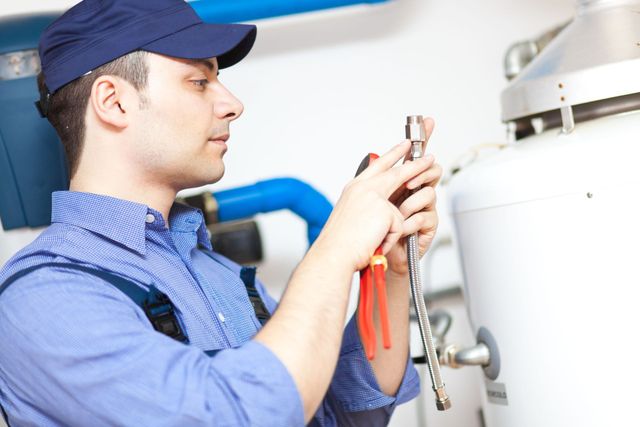Ensuring Longevity of Your Home's Hot Water System: Care Advice
Ensuring Longevity of Your Home's Hot Water System: Care Advice
Blog Article
Any individual is bound to have their unique perception involving Water Heater Maintenance Tips You Can't Afford to Forget.

Hot water is essential for everyday comfort, whether it's for a refreshing shower or cleaning dishes. To guarantee your warm water system runs effectively and lasts longer, regular upkeep is essential. This short article supplies useful tips and understandings on exactly how to maintain your home's warm water system to avoid interruptions and costly fixings.
Introduction
Keeping your home's warm water system might appear difficult, yet with a few easy steps, you can guarantee it runs smoothly for years to come. This overview covers whatever from recognizing your warm water system to DIY upkeep suggestions and recognizing when to call in specialist assistance.
Importance of Keeping Your Hot Water System
Routine maintenance not just prolongs the lifespan of your warm water system yet likewise guarantees it operates successfully. Ignoring maintenance can cause decreased performance, higher power bills, and even early failure of the system.
Indicators Your Warm Water System Demands Maintenance
Knowing when your hot water system requires interest can prevent major concerns. Watch out for indicators such as inconsistent water temperature level, strange noises from the heating system, or rusty water.
Comprehending Your Warm Water System
Before diving into maintenance tasks, it's handy to understand the fundamental parts of your hot water system. Typically, this includes the hot water heater itself, pipes, anode poles, and temperature controls.
Monthly Upkeep Tasks
Normal monthly checks can aid capture minor problems prior to they rise.
Flushing the Hot Water Heater
Purging your hot water heater eliminates sediment accumulation, enhancing performance and lengthening its life.
Checking and Changing Anode Rods
Anode rods protect against deterioration inside the container. Checking and replacing them when worn is crucial.
Inspecting and Adjusting Temperature Setups
Adjusting the temperature setups makes sure optimum efficiency and safety and security.
Do It Yourself Tips for Upkeep
You can execute numerous upkeep tasks on your own to keep your warm water system in top condition.
Looking for Leakages
Frequently examine pipelines and links for leakages, as these can bring about water damage and greater bills.
Testing Pressure Relief Valves
Checking the stress relief valve ensures it operates appropriately and protects against extreme pressure buildup.
Protecting Pipes
Protecting warm water pipelines lowers warm loss and can save power.
When to Call a Specialist
While do it yourself maintenance is useful, some problems require specialist know-how.
Complicated Problems Requiring Specialist Assistance
Instances consist of significant leaks, electric problems, or if your hot water heater is continually underperforming.
Routine Specialist Upkeep Conveniences
Expert upkeep can include extensive assessments, tune-ups, and ensuring compliance with safety requirements.
Conclusion
Routine maintenance of your home's warm water system is important for performance, long life, and expense financial savings. By complying with these tips and recognizing when to look for expert aid, you can make sure a trustworthy supply of hot water without unanticipated disruptions.
How to Maintain an Instant Hot Water Heater
Before tinkering with your hot water heater, make sure that it’s not powered on. You also have to turn off the main circuit breaker and shut off the main gas line to prevent accidents. Also turn off the water valves connected to your unit to prevent water from flowing into and out of the appliance. 2. When you’re done, you have to detach the purge valves’ caps. These look like the letter “T†and are situated on either side of the water valves. Doing so will release any pressure that has accumulated inside the valves while at the same time avoid hot water from shooting out and burning your skin. 3. When the purge valves’ caps are removed, you have to connect your hosing lines to the valves. Your unit should have come with three hoses but if it didn’t, you can purchase these things from any hardware or home repair shops. You can also get them from retail stores that sell water heating systems. Read the user’s manual and follow it to complete this task properly. When the hosing lines are connected, open the purge port’s valves. 4. You should never use harsh chemical cleaners or solutions when cleaning your unit. Make use of white vinegar instead. It should be undiluted and you’ll probably use about 2 gallons. 5. Now flush your water heater. This task should probably take about 40 minutes. We can’t give you specific directions for this because the procedure is carried out depending on the type, model and brand of your heater. With that being said, refer to the user’s manual. 6. When you’re done draining the unit, you have to turn off the purge port valves again. Remove the hosing lines that you earlier installed on each of the water valves. Put the valve caps (purge port) back in their respective places and be very careful so as not to damage the rubber discs that are found inside these caps. 7. Now that everything’s back in place, check your user’s manual again to find out how to reactivate your water heating system. 8. Once it is working, turn one of your hot water faucets on just to let air pass through the heater’s water supply pipes. Leave the tap on until water flows smoothly out of it. https://www.orrplumbing.com/blog/2014/september/how-to-maintain-an-instant-hot-water-heater/

As an avid reader about How to Maintain Your Water Heater & Prolong its Life, I was thinking sharing that post was really useful. Make sure you take a moment to distribute this write-up if you liked it. I cherish your readership.
Browse Website Report this page